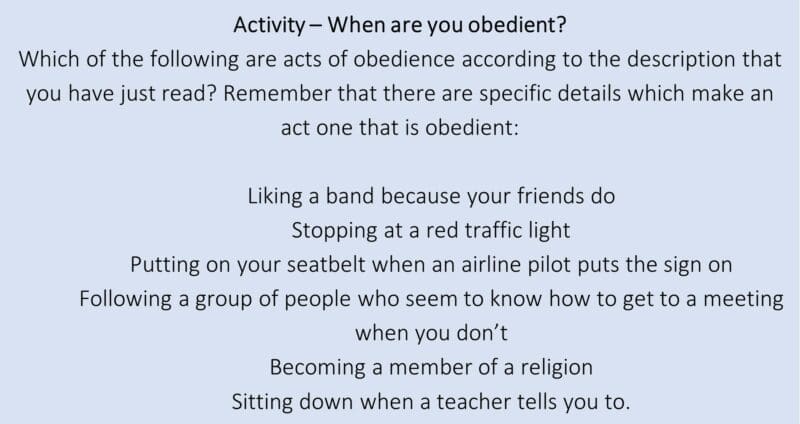In this post
Researchers have long studied social influence as it has such an impact on so many areas of all of our lives. Hollander (1981) defined social influence as “occurring whenever an individual responds to the actual or implied presence or one or more others.” The scope, therefore, for this definition is huge as it could apply to almost everything we do and in many aspects of daily living, for example:
- Conformity
- Socialisation
- Leadership
- Obedience
- Peer pressure
- Sales and marketing
Each of these attempts to explain why people are so heavily influenced by the actions or instructions of others, particularly in times of uncertainty or lack of knowledge and understanding of an event or situation.
What is obedience?

Obedience is an excellent example of social influence because it often involves individuals agreeing to do something that they would not necessarily choose to do or that they simply do not want to do.
People will follow an order or instruction if they believe, or know, that the person giving the order is in a position of authority over them. Authority is the key aspect here and this is what differentiates obedience from other forms of social influence. Look at the list below of some examples of authority figures who we must obey or else face actual or imagined negative consequences if we refuse to do so:
- Police
- Airline pilots
- Teachers
- Parents
- Superiors at work, such as a manager
- Doctors
- Dentists
- Religious leaders
- Military officials.

There are individuals in this list who, be defying them, i.e. by not obeying, an individual could face legal consequences, such as the police and airline pilots. The other people in the list may not have legal authority but they are still routinely obeyed as they are seen to be in a position of authority over us.

What is conformity?
Unlike obedience, when someone conforms there is no authority figure involved and the individual goes along by social influence because of other reasons. The reason why someone conforms is usually to do with ‘fitting in’ with other people. This is known as ‘normative’ conformity.
An individual may change their beliefs or their behaviour in order to conform, for example they may agree that eating meat is undesirable, if they are in a group of people who are vegetarians, even if this is not what they truly believe. Conformity here, therefore, may be defined as ‘agreeing on the outside but disagreeing on the inside’.
Conformity is generally defined as yielding to group pressure, whether this pressure is real or imagined on behalf of the individual. Conformity is also known as majority influence; this is because the behaviour or beliefs of the individual usually change in order to fit in with most of the people.
What is deindividuation?
Deindividuation occurs when an individual loses a sense of their self, and instead fully identifies with the actions of a group. When individuals are in a big group, they feel less personally responsible for their actions, and deindividuation is thought to account for behaviour such as rioting and football violence, where the group as a whole is given the collective responsibility for the actions that occur.
As the size of the group increases, the individual is less and less likely to take personal responsibility for their actions. The individual also feels anonymous and this can encourage them to carry out behaviours that they would not normally do if they were alone.
Research consistently shows that individuals who are in the group are far more likely to indulge in risky or illegal behaviour than if they are acting alone.
What is the bystander effect?
The bystander effect is a social psychology phenomenon where individuals are compelled not to act in an emergency situation if other people are present. The more people who are present, the less likely an individual is to become involved in the situation.
One of the most shocking examples of the bystander effect happened in 1964 in New York when a young woman named Kitty Genovese was murdered and it was thought that 37 or 38 people were witnesses to the murder and yet did nothing about it. It was assumed on behalf of each individual that someone else would intervene and call the emergency services. This never happened and Kitty was attacked twice, in incidents several minutes apart; at neither time did anyone do anything to stop the attack from taking place.





